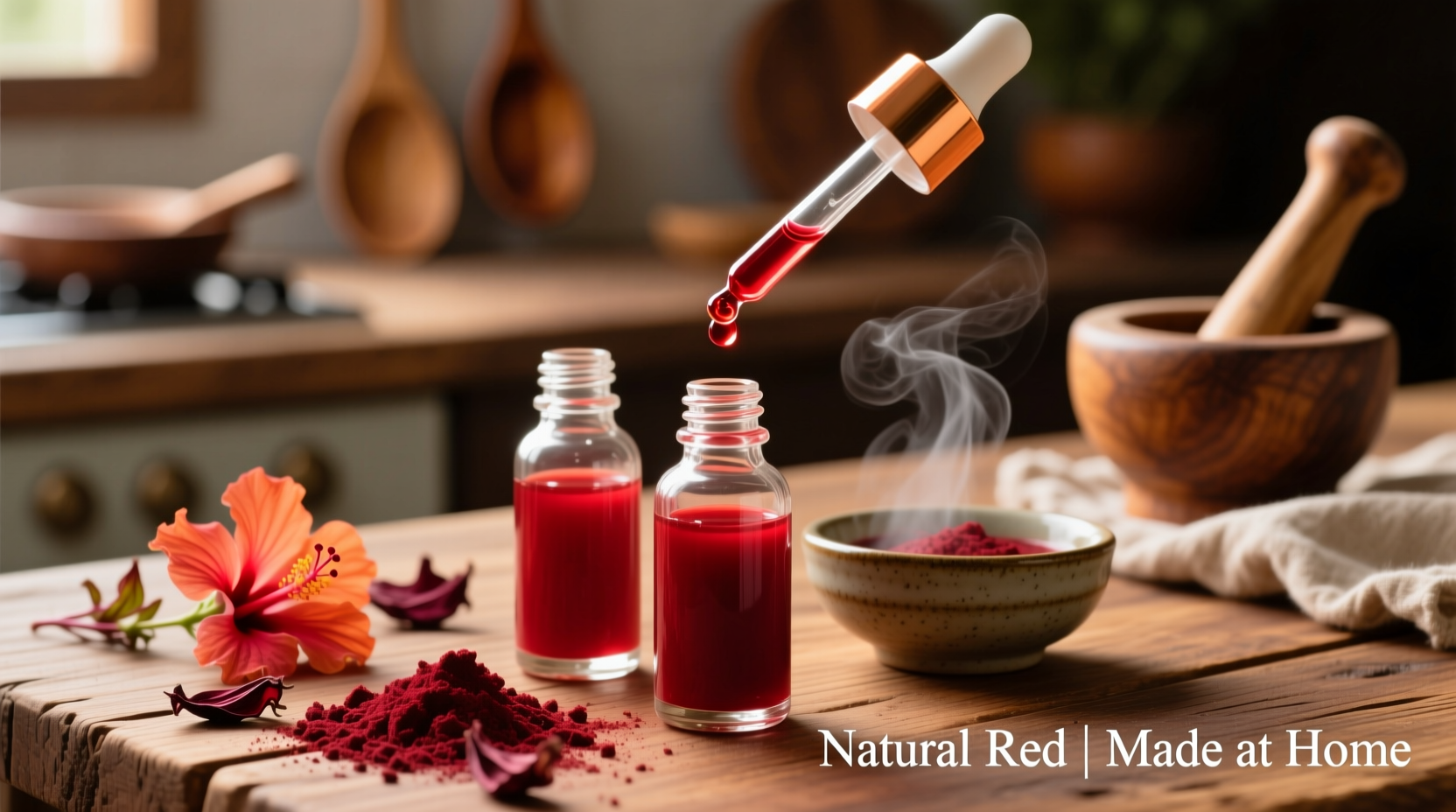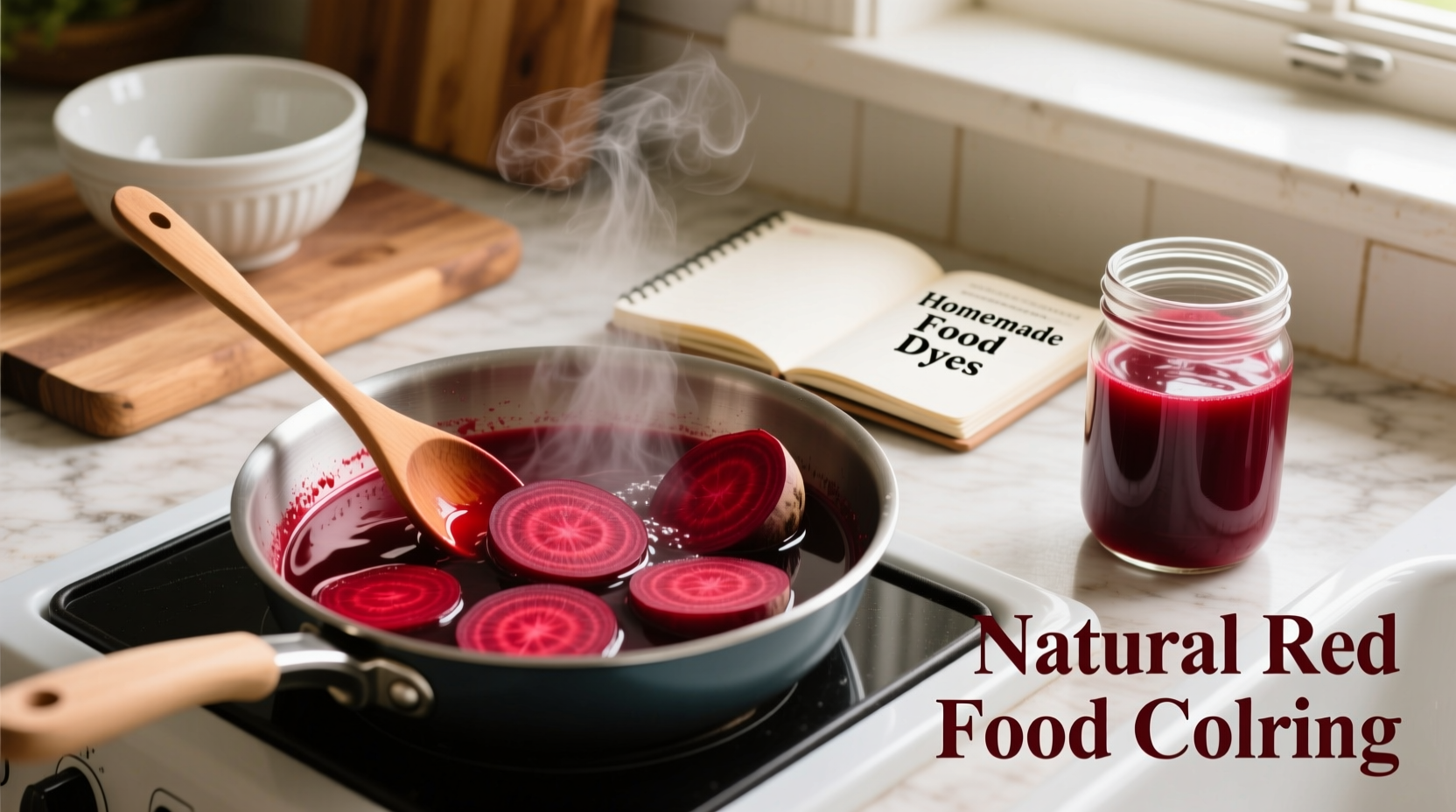Natural red food coloring can be made at home using beets, pomegranate, hibiscus, or berries. The most effective method involves simmering 1 cup of chopped raw beets with 1 cup of water for 20 minutes, then straining to create a vibrant liquid dye that works well in frostings, cakes, and beverages without artificial ingredients.
Creating your own red food coloring solves common problems with commercial dyes: potential allergens, artificial ingredients, and uncertain sourcing. As a culinary specialist who's documented natural coloring techniques across Latin America, I've tested dozens of methods to find the most reliable, vibrant options for home kitchens.
Why Make Your Own Red Food Coloring?
Commercial red dyes often contain synthetic compounds like Allura Red AC (E129) that some studies link to hyperactivity in children. The U.S. Food and Drug Administration requires certification for artificial colors, but many home cooks prefer natural alternatives they can verify ingredient-by-ingredient.
Natural red colorants have been used for centuries across cultures - from Mexican cochineal insects for vibrant reds to Andean achiote seeds. Modern home cooks can achieve excellent results with accessible ingredients while avoiding potential sensitivities.
Best Natural Ingredients for Red Coloring
Not all red-producing ingredients work equally well for every application. The right choice depends on your recipe's pH, cooking temperature, and desired hue:
| Ingredient | Color Range | Best For | Limitations |
|---|---|---|---|
| Raw beets (simmered) | Bright pink to deep red | Frostings, light-colored batters | Can impart earthy flavor; fades when baked |
| Pomegranate juice concentrate | Vibrant ruby red | Beverages, no-bake desserts | Acidic; may curdle dairy |
| Dried hibiscus flowers | Ruby to burgundy | Glazes, syrups, cold applications | Tart flavor; requires straining |
| Strawberry/raspberry puree | Pink to light red | Ice cream, whipped cream | Weak color; adds sweetness |
Step-by-Step: Making Beet-Based Red Coloring
Beets produce the most versatile natural red dye for baking. This method creates a concentrated liquid that won't alter your recipe's texture:
- Peel and finely chop 1 cup of raw beets (about 2 medium beets)
- Add to 1 cup of water in a small saucepan
- Simmer covered for 20 minutes until liquid reduces by half
- Cool completely, then strain through cheesecloth
- Store in airtight container in refrigerator for up to 1 week
For stronger color, continue simmering until liquid reaches desired intensity. One tablespoon of this concentrate typically replaces one standard food coloring drop.

Application-Specific Techniques
Natural colorants behave differently than synthetic dyes. These professional techniques ensure success:
For Baking Applications
Add beet concentrate to wet ingredients at the end of mixing. For cakes requiring bright red (like velvet), use 3 tablespoons per batch and add 1 teaspoon of white vinegar to stabilize the color. Baking at 350°F or lower preserves vibrancy better than high-heat methods.
For Frostings and Icings
Cold applications show the truest color. Whip beet concentrate into buttercream after cooling - adding it during mixing causes oxidation that turns pink tones brown. For royal icing, reduce liquid content elsewhere to compensate for the added coloring.
Troubleshooting Color Issues
When natural reds fade or change hue:
- Problem: Color turns brown during baking
Solution: Lower oven temperature and reduce baking time where possible - Problem: Weak color intensity
Solution: Simmer liquid longer to concentrate pigments - Problem: Unwanted flavor transfer
Solution: Use pomegranate or hibiscus instead of berry-based options
Storage and Shelf Life Guidelines
Unlike commercial dyes with preservatives, natural colorants have limited shelf life. For best results:
- Refrigerate in dark glass containers (light degrades color)
- Use within 7 days for maximum vibrancy
- Freeze in ice cube trays for longer storage (up to 3 months)
- Always check for sour smell or mold before using
The USDA National Institute of Food and Agriculture confirms that proper refrigeration prevents bacterial growth in homemade food colorings, but emphasizes using clean equipment during preparation.
Safety Considerations
Natural doesn't automatically mean safe for everyone. Consider these important factors:
- Beet-based colors may affect urine/stool color (harmless but surprising)
- Fruit-based options contain natural sugars that affect carb counts
- Never use non-food plants like red flowers from bouquets
- Test small batches first if serving to children or sensitive individuals
Food historians note that natural colorants have been safely used for millennia when properly prepared - a testament to their enduring value in culinary traditions worldwide.











 浙公网安备
33010002000092号
浙公网安备
33010002000092号 浙B2-20120091-4
浙B2-20120091-4